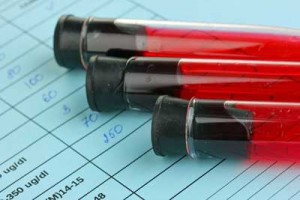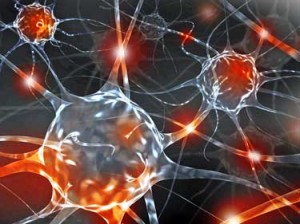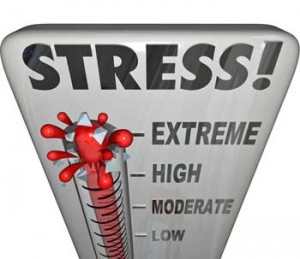“It’s an alp to climb, to see if we can combat this all with state of mind”
What do we know about Donna thus far? We know she was a very athletic mother and journalist before waking up one day paralyzed with a bout of Guillain-Barre syndrome. We know that she partially recovered, but that a more debilitating attack left her temporarily paralyzed again. We know she has a pacemaker, a bleeding disorder, thyroid problems, slipped discs, and experiences severe fatigue and pain. We know her genetics and probably her father’s early death loaded the gun, so to speak, that took out her immune system.
We know that when she gets to the landing of the stairs in their house she often has to rest. We know her legs feel as ‘alive as driftwood’, that she regularly experiences fevers and that this former athlete now greatly fears her body – and that blocking out those fears and focusing on more positive aspects of her life is a real struggle.
We know that Donna, under the guidance of an MD with an integrative health focus is going to include two practices, meditation and yoga, and acupuncture over the next years to see if she can reclaim some joy in her life and become healthier as well. Before she does that, though, her doctor is going to establish her physiological baseline, and that’s what we’re going to learn about now.
Lab Work
Seventeen vials of blood and three saliva swabs later Donna gets the news. Her white blood cell count is quite low (2,000, while normal is 5-10,000) and her lymphocyte numbers are numbingly low (20, and normal is 120-300). Her red blood cells are enlarged, and they’re streaming out of her blood marrow at a higher than normal speed.

Blood test reveal an autoimmune process is likely affecting cells being produced by her bone marrow.
Her iron levels are less than half of what they should be (hers is 20, normal is 50-70). Her low ferritin levels (hers is 4, normal is 10-300) indicates that she’s not storing what little iron is present. Her low complement levels suggest that her immune system has run out of gas trying to fight off an infection.
While significant parts of her immune system are tanking, her almost-off-the-charts high salivary cortisol levels indicates her stress response is going gangbusters. Two inflammatory cytokines (Il-6, IL-2) are moderately high and her ANA count is slightly positive.
Putting it all together Dr. Rowland-Seymour suggests that some unidentified autoimmune process is causing her bone marrow to produce blood cells less efficiently than it should.
The blood tests were just prelude. Now comes the physical exam.
Physical Exam
Donna now has a cornucopia of diagnoses. She’s literally been “held together” by the medical profession.
Her vasovagal syncope is being treated by a pacemaker. Her thyroiditis has been taken care of by thyroid medication. The nerve and muscle damage and spasms from her Guillain-Barre Syndrome attacks are in the physical therapist’s hands now.
That damage is why this former athlete sometimes needs to hang onto people to get up, and can’t put one foot directly in front of the other without falling. She would fail a typical sobriety test given by a cop.
It’s why working out one set of muscles (working out as in walking on her toes in the doctor’s office) leaves her muscles feeling rock hard and sore the next day. Any exercise quickly overloads the remaining nerve fibers and the muscles they’re connected to, leaving the muscles in lock-down mode. That nerve damage may also be the source of the severe exercise intolerance which can leave her exhausted from small tasks. (Is nerve damage causing the same problem for some people with ME/CFS and FM?)
Her small fiber neuropathy that left her with dead feeling hands and feet is being treated by, well, nothing at all. She has pancytopenia (those low blood cell counts). Her bladder and pelvic floor spasms are treated by exercise, stretching, and physical therapy.
She has Von Willebrand disease – a coagulation abnormality.
Her three herniated discs and injured sacrum, pelvis, and sacroiliac joint don’t seem to fit in with these immune and nervous system problems, but in a way they do. They occurred when her Labrador retriever pulled a weakened Donna down the steps. Would that have happened to our former 60 lap pool swimmer? Probably not. Chalk the back injury up to an indirect, delayed effect of damage done to her nerves by Guillain-Barre syndrome. Weekly physical therapy sessions treat those injured discs.
Damage to the nerve endings in her gut from the second Guillain-Barre Syndrome attack affected her gut motility leading to intestinal infections and a year of antibiotics. The IBS she was left with is only partially dealt with by a special diet. Her gut pain is still debilitating at times.
There are also the year-long bouts of 100 degrees or more fever. There’s the constant, burning, itching skin rashes that keep her up at night, and the facial eczema that sometimes spreads to her hands and arms. She doesn’t dare use immunomodulatory creams for fear of how they’ll modulate her whacked out immune system.
Her joint pain causes her to use braces when she types, and there are also headaches and insomnia.
With her fatigue, joint, gut, back and pelvic pain, dead feeling hands and feet, burning itching skin, and sometimes fevers, Donna is hurting in seemingly every way possible. The techniques she’s going to try over the next year seem puny indeed compared to all the problems she‘s confronting. They seem more like walking sticks than the climbing ropes and carabiners she needs to climb that ‘alp’ of problems.
Both fear and hope drive her. After ten years on the medical treadmill she’s run out of better options, and she has her kids’ experience of their sick mom to think about. If the adverse childhood event studies are correct, she fears that the trauma of seeing their mother so sick could set them up for problems later on. There has to be a better way.
- Coming up next : Donna gets to work
- Check out other blogs in Last Best Cure series here.
____________________________
Over the next year Donna is going to engage in three approaches designed to turn her mindset from fatigue, frustration, worry, and pain towards contentment and joy and see what happens to her physiology, her mood, her symptoms, and how functional she is.
The three approaches she’ll take are meditation, yoga, and acupuncture. She’ll keep taking her current supplements and follow her current diet (gluten, dairy, and additive free diet emphasizing vegetables and fruits.)
- Check out The Last Best Cure Blog Series
_______________________________________________—
Donna Jackson Nakazawa is an science journalist, author and public speaker. She tweets often about breaking medical news. Follow her tweets and check out her Facebook site and website and blog.
She is the author of the The Last Best Cure, The Autoimmune Epidemic, Does Anybody Else Look Like Me? A Parent’s Guide to Raising Multiracial Children as well as a contributor to the Andrew Weil Integrative Medicine Library book, Integrative Gastroenterology, (Oxford University Press, April 2010).
Among others she is the recipient of the 2010 National Health Information Award, the 2012 international AESKU Award from the International Congress on Autoimmunity for her lifetime contribution to autoimmune disease research with the book The Autoimmune Epidemic.









Definitely a distinct subset. Many have low body temp over the long haul.
Wonder what her NK, T and B cell panel looked like? RP
I wonder what her vitamin D level is like, whether she took probiotics after the antibiotics to try and help the gut problems and if she has tried magnesium for the pain levels. I’d then be thinking about low dose naltrexone or rituximab. Reducing the cortisol level may help and changing the mindset may help with that but so might phosphylated serine.
realised I’d forgotten to consider the bleeding disorder. That might mean low dose naltrexone and magnesium are out – what are calcium levels like?
I’m wondering how low dose naltrexone and magnesium would impact a blood disorder. Does either affect
platelets?
Calcium promotes clotting, magnesium counteracts that – possible explanation here http://www.ncbi.nlm.nih.gov/pubmed/8621478 – so increasing magnesium maybe not a good idea for someone with a bleeding disorder. All drugs have side effects, came across suggestions naltrexeone can sometimes affect the liver
I have had 100.3 temps daily for 3 yrs. I am reading her book. I love it. I tried Acupuncture for the first time last week. While I felt relaxed during the treatment, my entire bodybuilder hurt for days afterward. I was in a horrible flare. Interesting the same thing happened when I had an EMG. So, Acupuncture is out for me right now. But I will try the breathing exercise and yoga.
Correction: entire body.
Good luck Donna – sure hope this year brings you some relief.
Thanks again Cort & co..I love this place!
I recalled calorie restriction improved mitochondria so linked in BDNF Results, calorie restriction linked with neuroprotection http://www.ncbi.nlm.nih.gov/pmc/articles/PMC2649682/
Sugar and low BDNF http://www.olsonnd.com/what-sugar-does-to-your-brain/
Finally getting around to reading this older post, and I don’t know whether Donna is checking the comments anyway … but I just happened to read the blurb about Donna and was surprised to discover that she wrote “Does Anybody Else Look Like Me?” That book has come up a few times among multi-racial friends and friends who have multi-racial children (as I do), and everyone recommends it VERY highly. Just wanted her to know that people are talking about her book and genuinely learning from it!
Good to hear – thanks 🙂